|
Sample front (above), Sample back (below).
0 Comments
Colour chips, samples, and tests are a crucial step in the process of developing a Jacquard weaving. The leap from design on-screen to material expression is a huge one. Woven tests are the only way to figure out what you've programmed the loom to do, how the colours will appear and mix, and what textural effects can be achieved. Below are some examples, ranging from early experiments to project-specific developments and perfecting of technique. Photo of WhiteFeather holding up the final Frida piece, captured by Kelly. This piece is now in the collection of Alexandra Lemus Rodriguez. A bit of a more clear image and a detail shot by WhiteFeather (below). Frida has been embellished with an assortment of hand-dyed silk ribbons (mostly dyed with natural dyes: cochineal, turmeric, onion skin, madder, logwood, indigo, avocado skins).
The summer 2015 Jacquard workshop series has concluded. Special thanks to our teacher, Louise Lemieux-Bérubé, who shared so many new Pointcarré design skills with us. We are all so grateful to have had this opportunity, offered as part of the Material Codes: Ephemeral Traces project, funded by the FRQSC. Samples shown hanging from the cupboards (above) by Claire Nadon, as well as some of her early experiments on the table. Some of the most recent weavings cut off the loom, just before the final workshop. Image of two girls by WhiteFeather, floral image by Claire Nadon. Detail shots from WhiteFeather's two girls (above). Geneviève Moisan with her self-portrait woven with industrial weave structures (above). Gen's sample with brocade and industrial weave structures (below). Another sample, and self-portrait, by Geneviève Moisan (below) using industrial weave structures. Below are some detail shots of Four Seasons by Claire Nadon (Spring, Summer, Fall and Winter) - based on scenes of trees in her yard through the same window during different times of the year. The image below shows three of the seasons together, as well as one sample (far right) based on an abstract painting. All by Claire Nadon. Below, a series of double-sided pieces by Sophia Borowska (front and back shown) - these are three new pieces in a series of five. Finally, below are some samples in a new series on data by Kelly Thompson. Above: image on the left shows the backside of one of the weavings, while image on the right shows the front side of another. Combination of double weave structures, industrial structures and non-woven areas. Below: detail of front of one of the samples in image on left, detail of back of one sample in image on right. Let's not forget the colour chip samples woven by Sophia Borowska (and held up front and back here by Sophia and WhiteFeather).
Multi-layered cloth with 6 wefts. (black, pink, green, blue, yellow, and white) The black area is 3 layers, with the bottom two stitched together at the selvedges, and the top layer free. The coloured areas are all one big pocket, with alternating colours forming smaller pockets on top. These could be stuffed, or have cables/lights inserted into them, or stiffened and cut open to reveal layers behind. Where the green tubes meet the edges, there is an opening into the tunnel. Each colour uses two wefts and 2-3 warp colours. This allowed the layers to pack down evenly, made each layer thicker, and colour areas sharper, and allowed for a wide variety of shades and colours. Details Back (you can see how the whole coloured area is one pocket, with the black as backing)
In order to have all the colours as one big pocket, I had to reserve the black and white warp threads and the black weft for the background in all the colour areas. If I used the black weft in any of the colours on the surface, it would have stitched the big pocket together. Tests in double weaves, using a different ratio of weft yarns in different structures. Still on the loom. Detail (below).
The below image shows the point paper draft of a brocade with two colour wefts. Somewhere the structures were wrong or the harness tie was wrong for this file. The resulting woven samples are below. It was pointed out to me that brocade might not be the best approach for this image, and that simply making use of the colour warp would be the best use of my time. You can see from the woven sample that the background structure isn't working, but the brocade is. Also, for some reason the image wasn't flipped but the brocade was so that it actually appears on the back (ends on the front). When the cloth is flipped, the image appears to be in negative. Woven with one background weft in black cotton and two colour brocade wefts in yellow and green. At this time, I wasn't concerned with the exact colour of the girls' dresses so used whatever weft threads were kicking around the studio. Detail of brocade and background image that isn't working. I decided to redesign the image as a single-faced cloth, utilizing the colour warp and play with new structures to create the colours I want, versus using brocade. Below is the new draft (and weaving simulation) that I'm working on, but it still needs work. Brown/beige is a VERY difficult colour to recreate in a 6-colour structure. Also, one of my greys appears quite pinkish. Gen helped me figure out the green/turquoise. I should also mention that the image is my interpretation of a photograph by artist, William Gedney. You can see the original image here.
Overall piece (above). Detail of the texture (lighting is bad in this iPhone photo). Below: colour chips - bottom section is by Gen, top section is by Kelly, who used some of Gen's colour structures and altered them. Again, lighting isn't the best in this iPhone photo. Detail of some of the colour chips (below) - nice greys!
Digital Uncertainty, 2015. 19” x 30”. (Digital Scan)
Double-weave using two wefts, one 2/8 cotton in light blue, one a mix of grey and black 2/16 cottons. |
Weaving Data Research Group Samples Blog
Welcome to the blog of working samples produced by members of the Weaving Data Research Group (WDRG).
These samples are produced in response to the new techniques explored during the various Jacquard design workshops led by Louise Lemieux-Bérubé in the summer of 2015. Archives
January 2016
Categories
All
|



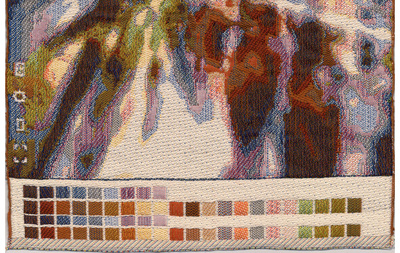
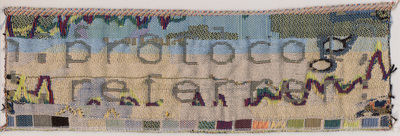



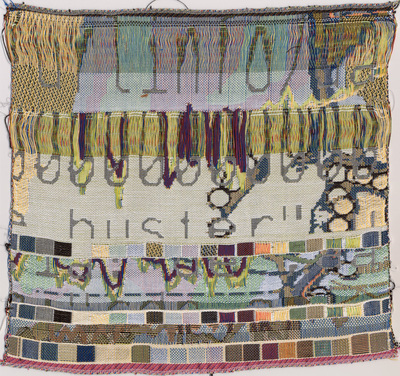




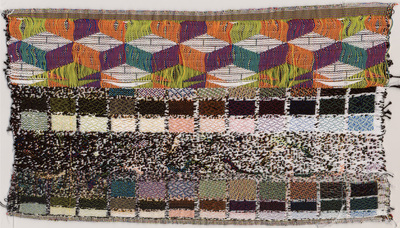








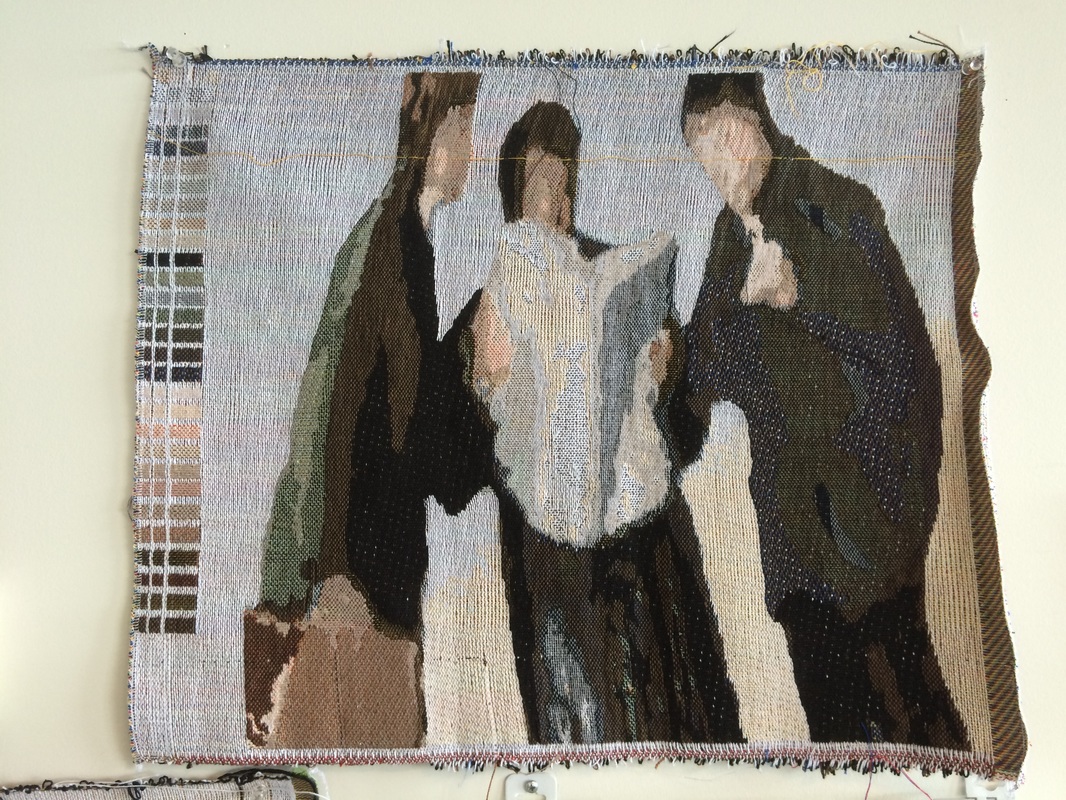


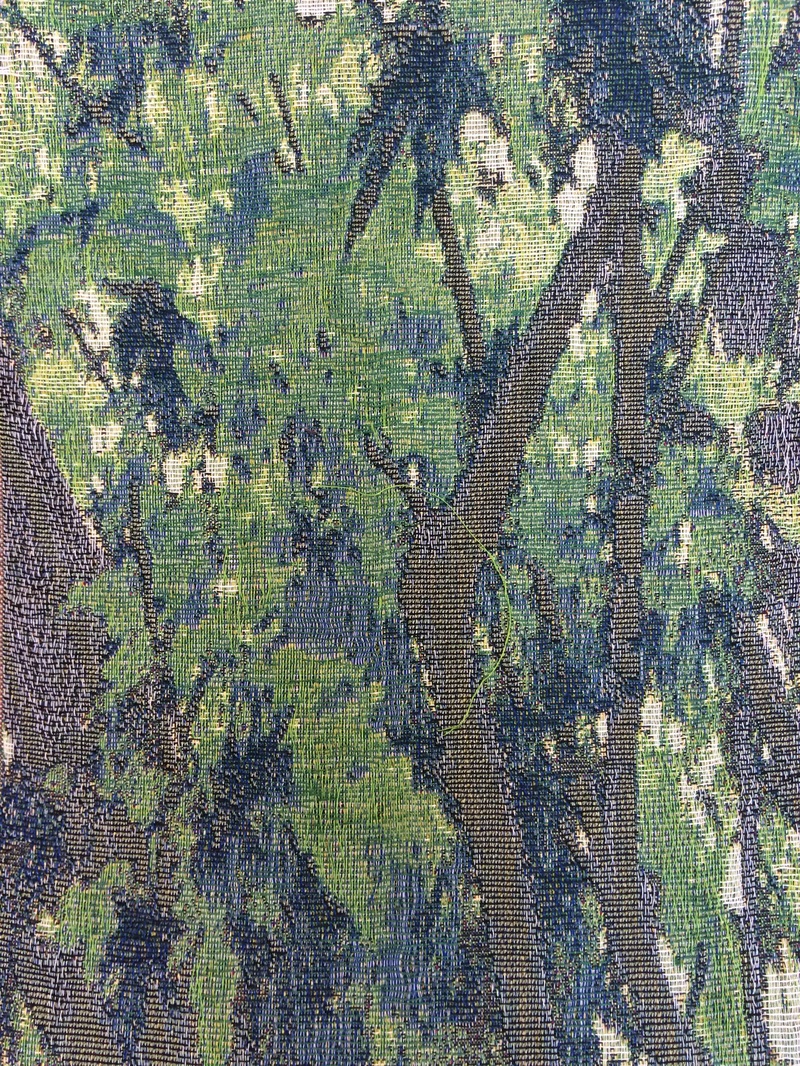

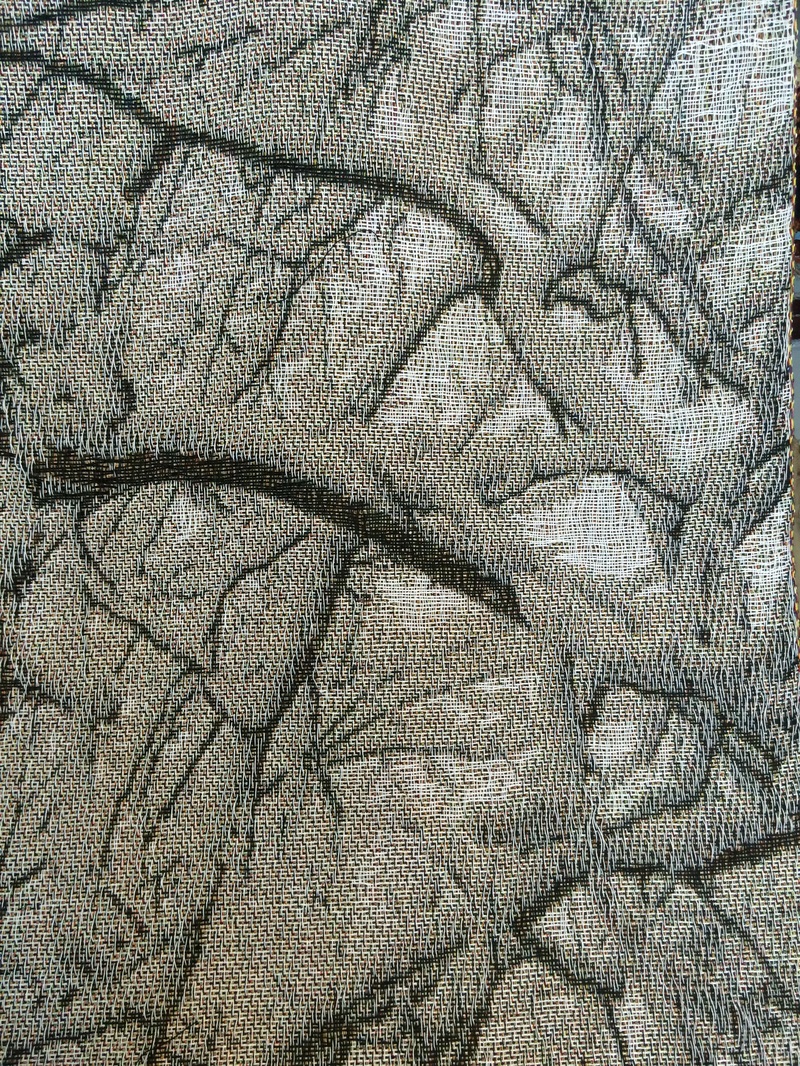




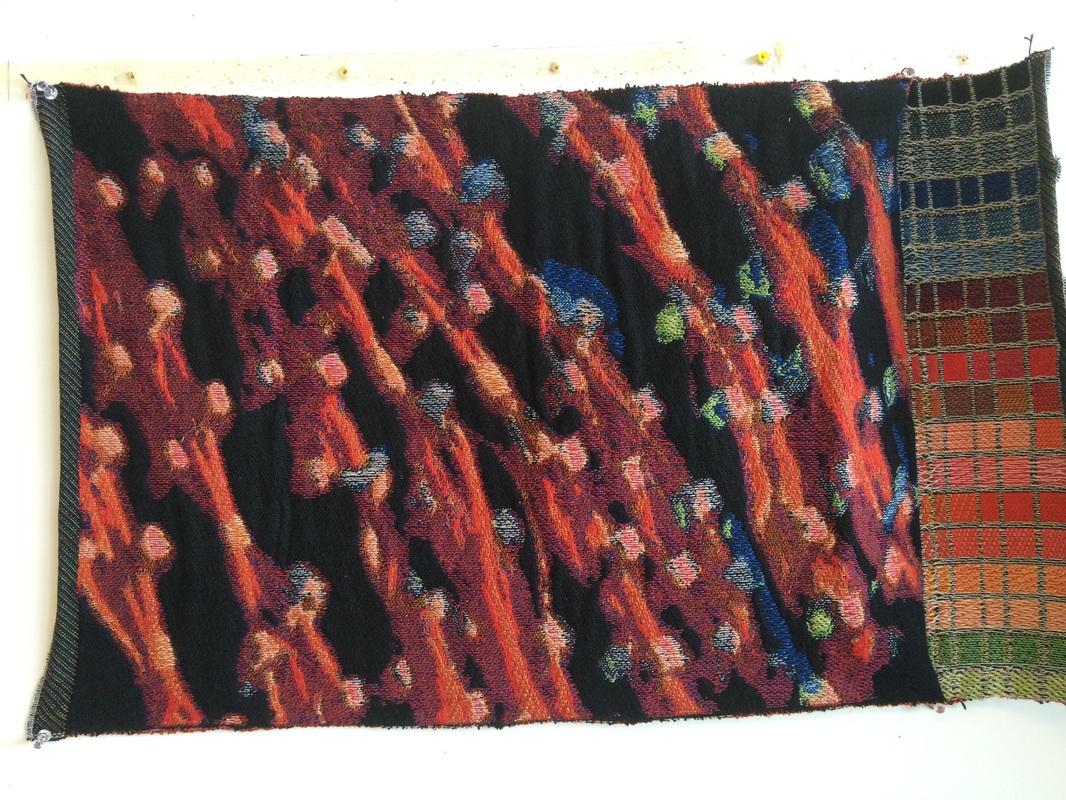


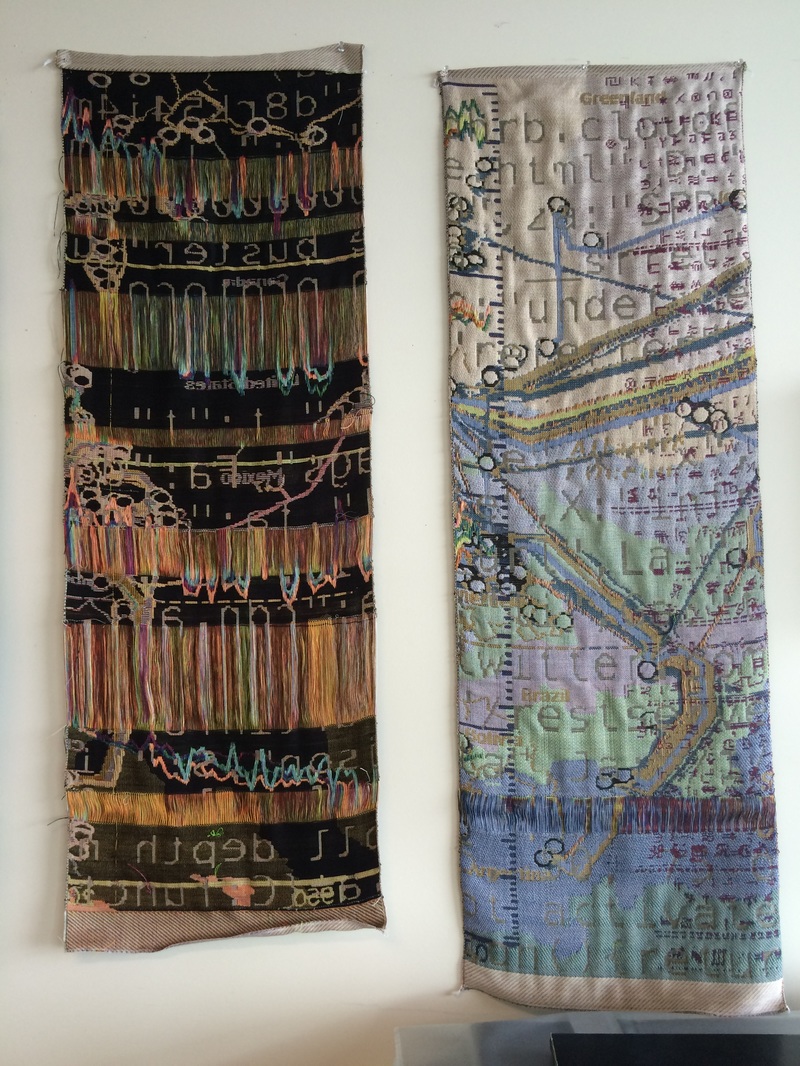















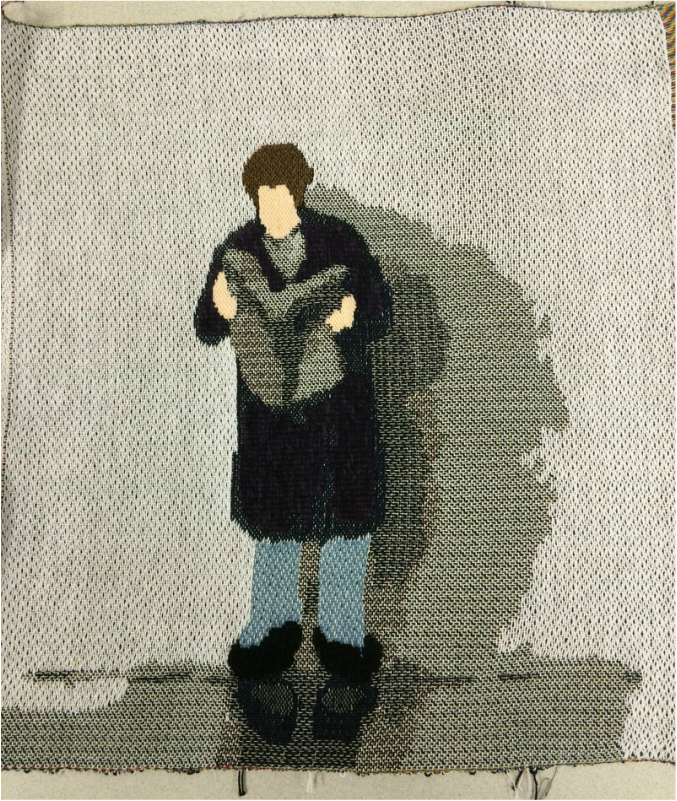



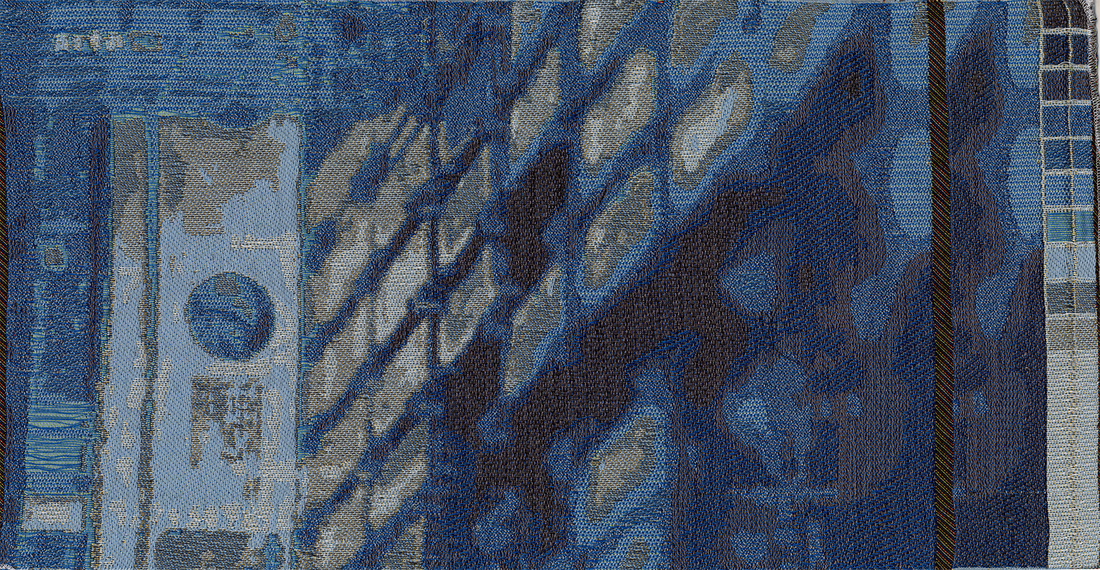

 RSS Feed
RSS Feed